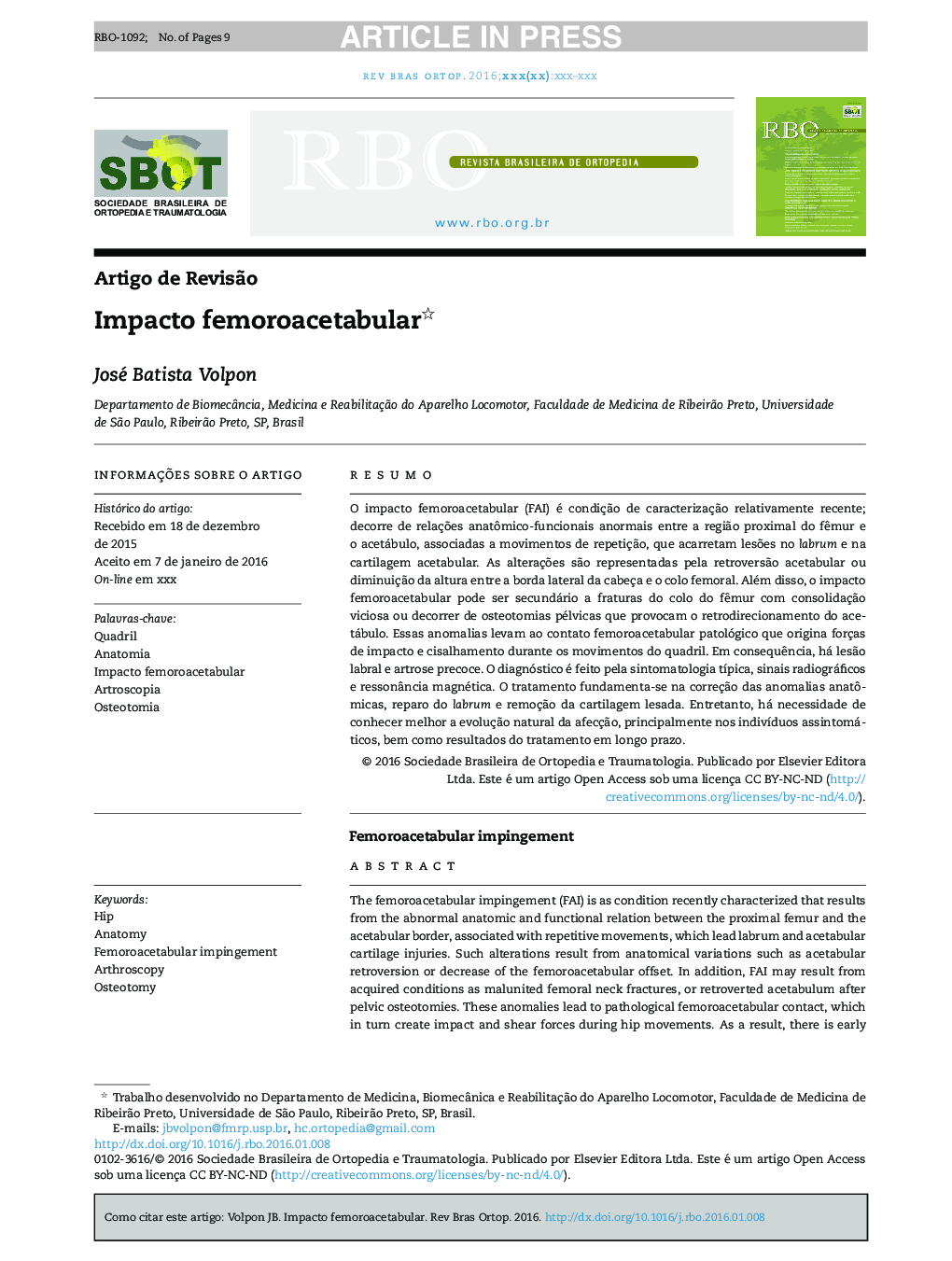| Article ID | Journal | Published Year | Pages | File Type |
|---|---|---|---|---|
| 8599438 | Revista Brasileira de Ortopedia | 2016 | 9 Pages |
Abstract
The femoroacetabular impingement (FAI) is as condition recently characterized that results from the abnormal anatomic and functional relation between the proximal femur and the acetabular border, associated with repetitive movements, which lead labrum and acetabular cartilage injuries. Such alterations result from anatomical variations such as acetabular retroversion or decrease of the femoroacetabular offset. In addition, FAI may result from acquired conditions as malunited femoral neck fractures, or retroverted acetabulum after pelvic osteotomies. These anomalies lead to pathological femoroacetabular contact, which in turn create impact and shear forces during hip movements. As a result, there is early labrum injury and acetabulum cartilage degeneration. The diagnosis is based on the typical clinical findings and images. Treatment is based on the correction of the anatomic anomalies, labrum debridement or repair, and degenerate articular cartilage removal. However, the natural evolution of the condition, as well as the outcome from longâterm treatment, demand a better understanding, mainly in the asymptomatic individuals.
Keywords
Related Topics
Health Sciences
Nursing and Health Professions
Physical Therapy and Rehabilitation
Authors
José Batista Volpon,
